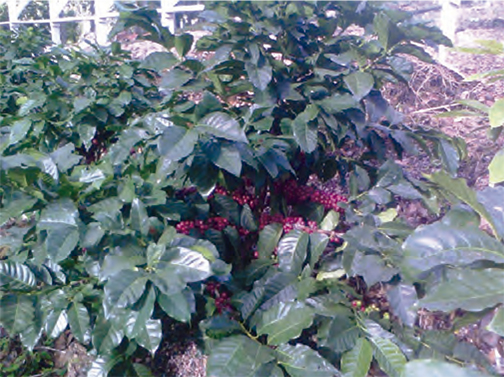Production of common seed of the coffee cycle 2015-2016 with cooperating producers from the state of Táchira
Abstract
The production of coffee seed in the National Institute of Agricultural Research of the Táchira state (INIA Táchira) dates back to the 1950s, beginning in the Bramón Experimental Field, using varieties that by tradition and culture, the producers had been cultivating such as Caturra , Yellow Catuai, Red Catuai, Tipica and Bourbon, highly productive and of good quality in the cup, however, with the arrival in the country of rust, caused by the fungus Hemileia vastatrix, in 1984 and due to its susceptibility to the disease These varieties were seriously affected having to resort to highly toxic products that were hardly available on the market.
In addition to this, in 1970 the INIA Táchira, formerly the National Fund for Agricultural Research (FONAIAP), had been working on finding solutions to this problem; One of the goals of genetic improvement was to develop research activities for the creation of new varieties with tolerance to coffee rust and agronomic conditions, low growth, high production of cherry coffee, high benefit yield and good cup quality. With which, for the year 2001 the INIA 01 variety is released. It is a multiline variety composed of lines of Catimores, Cavimores and crosses of them with germplasm of Ethiopian origin, from the Coffee Roya Research Center (CIFC ) in Oeiras, Portugal.
They were established in the Bramón Experimental Field of the INIA Táchira in F2 generation in 1976, likewise, lots were established with cooperating producers located in the Junín, Córdoba, Libertad and Rafael Urdaneta municipalities of the Táchira state; However, seed production continued to be low, and the demand for seed continued to increase by producers, which is why and in consensus, through a series of meetings of the national team of researchers in the coffee sector of INIA, the decision was made to produce common seed variety INIA 01; considering a series of morphological characteristics, where the main objective was the production of 3,000 kilograms, obtaining a total of 2,168 kilograms of seed, highly productive, of good quality in the cup, tolerant to coffee rust, highlighting said variety with a 60% in common seed, which is obtained in lots established by producers who bought seed in INIA Táchira with more than 3 years of age. This seed was distributed throughout all the coffee-growing states of the country, guaranteeing the production of 6,504,000 plants for the renewal of 1,300.8 hectares, thus avoiding the importation of coffee seed.
References
Carvajal, J. F. 1984, Cafeto, cultivo y fertilización. Instituto Internacional de la Potasa. 2da edición suiza. 282 p.
Fondo Nacional del Café. FONCAFE, Ministerio de Agricultura y Cría año 1977. Manual del cafeto. San Cristóbal, Venezuela. 140 p. Fondo Nacional del Café.
FONCAFE, Ministerio de Agricultura y Cría año 1977. Manual del cafeto. San Cristóbal, Venezuela. 140 p.


